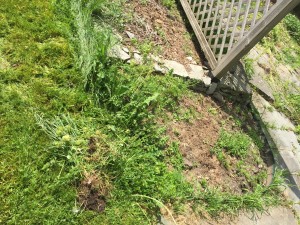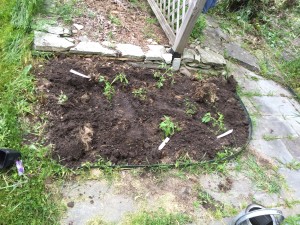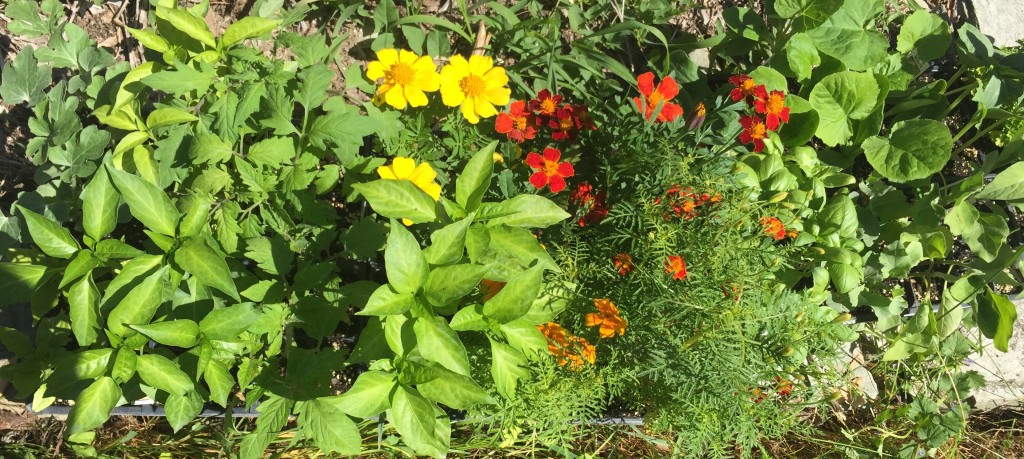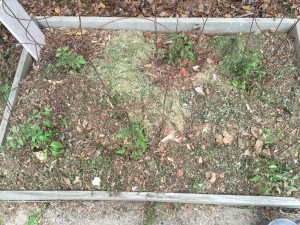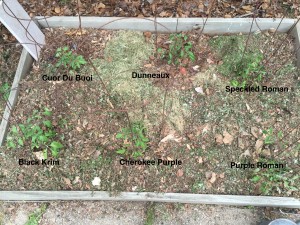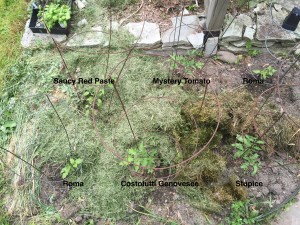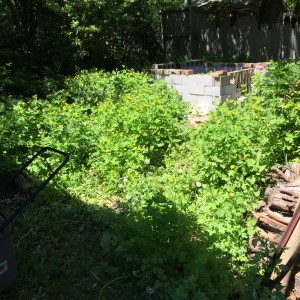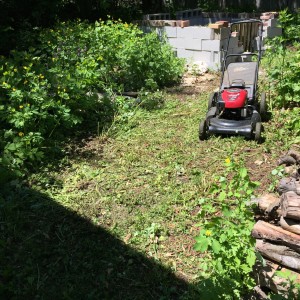Our gardens are divided into beds distributed around the property. Our design was to have the kitchen gardens integrated into the yards, rather than having one big rectangular plot, so we have squares and circles and pathways between. This gives us lots of flexibility with planting, with plot rotation, and with indicating which bed we are talking about because they all have different names!
This year, I decided to put tomatoes in the End Cap bed, where we have not grown them before. The bed is about 3 feet wide by 2 feet deep. In my book, that’s big enough for 6 tomatoes and a couple of basil around the perimeter. Keeping the individual plant’s growth habits in mind, we plant our plants closer together and stagger them to discourage weed growth between the plants, practice which come out of the biodynamic French intensive gardening traditions.
Before planting, some clean up was needed. Weeds had gotten a little bit of a foothold here, so I removed most of those. I think a good way to view weeds is competitors to your plants for nutrition from the soil and sunlight; you want to minimize that competition and give your plants the edge. There’s no need in totally obsessing over weeds however. Do what you can in the time you have. They’ll be back regardless, so you’ll have another chance!
I also wanted to get the tomatoes in the ground as quickly as possible. We have sometimes made the mistake of bringing home more sets than we have time to get planted in a weekend, say. Seedlings do okay in trays, but they really want to be in the soil, deepening their roots and stretching their stalks. Get them in the ground as quickly as possible for the best results all around.
That’s what I accomplished in 20 minutes!
PS: if you haven’t gotten your garden in, it’s not too late! Think small and successful. A half dozen tomatoes and some basil plants make a great little garden. In 20 minutes or so, that could be yours!
